By Pynshngainlang N Syiem
Fish is one of the staple foods of the people of Ri Bhoi district. Earlier in the days, it was a tradition for the elderly to bring home fresh indigenous fishes caught from various streams 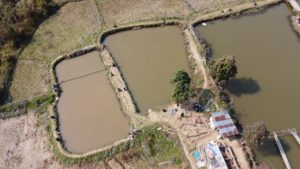 and rivers. Fishing as an activity back in time was orchestrated by using only an ordinary bamboo stick attached to a fishing wire and hook as well as by using fishing net. In time, however, this leisurely act of supplementing survival has turned into a sport for many fervent youths. Sunday Shillong foregrounds this activity by taking a tour to some of the iconic fisheries in the district of Ri Bhoi.
and rivers. Fishing as an activity back in time was orchestrated by using only an ordinary bamboo stick attached to a fishing wire and hook as well as by using fishing net. In time, however, this leisurely act of supplementing survival has turned into a sport for many fervent youths. Sunday Shillong foregrounds this activity by taking a tour to some of the iconic fisheries in the district of Ri Bhoi.
Means of Livelihood
Back in days, most anglers would prefer fishing in streams and rivers instead of a pond. This was mainly due to the fact that the local fresh water fishes in streams and rivers were far tastier when compared to those reared in ponds. Another aspect of this hobby is that fishing in streams and rivers, is a thrilling and exciting affair for passionate anglers.
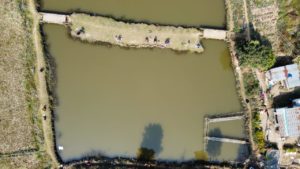 Fishing is one of the major sources of income for people residing in riverbanks like Umtrew, Umiam and other rivers besides engaging in farming as an occupation.
Fishing is one of the major sources of income for people residing in riverbanks like Umtrew, Umiam and other rivers besides engaging in farming as an occupation.
On speaking with Benedict Syiemlieh, a fishpond owner at Syadrit under Umsning C & RD Block, he said that he started constructing fishponds fifteen years ago without any government scheme. For the last two years, he has started commercializing his pond, by offering anglers to fish at his pond at a specific rate per kilogram.
“I have seven fish ponds in total and though I didn’t earn much from fishing by anglers, 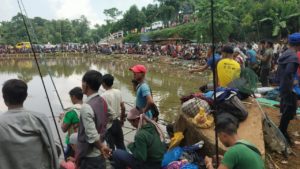 but most of my earnings, come from selling fingerling fish”, Syiemlieh said. When enquired as to what kind of fish species Syiemlieh reared at his ponds, he informed that there are several types of fishes that include ‘Khabah’ (Rohu), Kha Baw (Katla), Kha ski (Gonius), Kha Mirka (Mrigal), Kha Bamphlang (Gras Carp), Kha Dkhar, (Common Carp) and Kha Silver (Silver Carp).
but most of my earnings, come from selling fingerling fish”, Syiemlieh said. When enquired as to what kind of fish species Syiemlieh reared at his ponds, he informed that there are several types of fishes that include ‘Khabah’ (Rohu), Kha Baw (Katla), Kha ski (Gonius), Kha Mirka (Mrigal), Kha Bamphlang (Gras Carp), Kha Dkhar, (Common Carp) and Kha Silver (Silver Carp).
Capitalising and marketing
Recognizng the lucrative opportunities in this niche area for its one-off sport, a number of fishpond owners have been opening their sanctuaries to people to learn the art of fishing 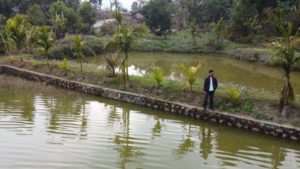 along with selling their catch.
along with selling their catch.
Syiemlieh informed that anglers usually come to his ponds throughout the year for fishing. Located just a few metres away from the old Guwahati-Shillong road at Syad Rit, his pond attracts a lot of anglers not just from the district, but from across the state especially government employees who come to spend their leisure time fishing during off-duty time.
When asked if he intends to produce fingerlings at his fish ponds, Syiemlieh stated that he hopes for it in the next few years, he will be able to do so, but as of now, he still depends on fingerlings from Assam.
Another fishpond owner, Mi Syiem Pond at Sumer, informed that apart from fishing 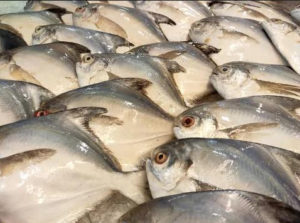 by anglers, he also used to sell his fish at the nearby market. When asked what is his average income per month from the fishponds, he said that the income is dependent on the number of anglers who visit but it is a decent income to provide for the family.
by anglers, he also used to sell his fish at the nearby market. When asked what is his average income per month from the fishponds, he said that the income is dependent on the number of anglers who visit but it is a decent income to provide for the family.
The Attraction Point
The converging junction for all interested in the sport is in the types and kinds of fishes that are to be found in these spots.
Syiem confirmed saying that table size fishes are released to the pond every day to attract the anglers and that these fishes are being brought all the way from Assam.
Sunday Shillong also caught up with Aristone M Ryndongsngi, a young promising lad from Iewmawlong, Ri Bhoi district, who recently discovered a new species of ‘Channa aristonei’, which was published in the ‘Copeia’ journal of the American Society of Ichthyologist and Herpetologist.
Having completed his degree in Fishery Sciences from St Anthony’s College, Shillong, Ryndongsngi now has set up his own venture ‘Ka Li Dohkha’ at Nongpoh, a live fish shop that 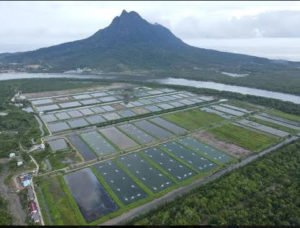 aims to cater to the people in Ri Bhoi district in particular, and the state as a whole.
aims to cater to the people in Ri Bhoi district in particular, and the state as a whole.
Ryndongsngi, one of the popular names among the fishery pond owners not just in the district but in the state too given his expertise in the field shared that as per the 2019-20 reports, the demand for fish in Meghalaya is more than 33,000 metric tons whereas the production is only about 14000 metric tons, thereby creating a gap of 19000 metric tons.
Green Concerns
As time has passed by, our rivers and streams have eroded too. They are being polluted to a huge extent with wastes from households, restaurants, factories and several other factors.
While speaking with one of the professional anglers from Ri Bhoi district, C. Nongrum, stated that fishing in ponds as far as his personal experience is concerned, started during the year 2001 onwards mainly because fish population in rivers and streams had gradually 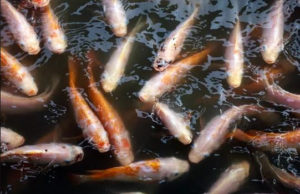 decreased.
decreased.
Nongrum said that using of dynamite, toxic chemicals and poisonous tree roots locally known as ‘Kharu’ is one of the major problems with regards to dwindling fish population. Though not all anglers prefer fishing in rivers and streams, and there are also those who prefer to fish in ponds, Nongrum said, the difference between the two experiences is in the kind of excitement derived from the two is a little bit different, but overall it is quite similar.
Being a professional angler himself, Nongrum said that his preferred option is to go fishing at Umtrew River in Lailad area because of the fact that fishes in this river is still found in abundance. He also lamented on the fact that the shrinking fish population in most rivers and streams of the district has unfortunately is also attributed to illegal ways of fishing by using dynamite or toxic chemicals to catch fish.
Unless people are responsible for their actions, the indigenous fish species could gradually proceed towards its extinction in the near future. “Most of our rivers now are polluted and contaminated. The indigenous fish species cannot survive if we don’t preserve them. Therefore, a holistic approach, especially at the grass root level is very important to create consciousness”, Nongrum said.
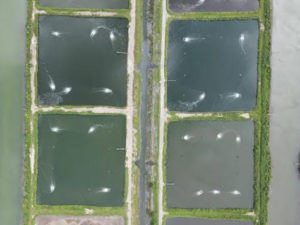 A Sport
A Sport
Though traditionally, fishing is actually a hobby and leisure activity for most people but in the present times, fishing has also become one of the major sporting activities. Various fishing competitions are being organized from time to time across the district and the state where anglers from different parts of the state come to participate with the hope of winning huge prizes offered by the organizers.
Ryndongsngi said that fisheries is one of the most promising businesses, as quoted from the handbook of fisheries on aquaculture published by the Indian Council of Agricultural Research, (ICAR), Delhi.
Ryndongsngi also lamented that given the current scenario, Meghalaya as a state will have to take many initiatives and endorse such schemes based on scientific approach to become self-sufficient in fish production in the next decade or two.
He also emphasized that as an alternative, releasing of exotic fish species in our rivers and reservoirs will pose a threat to the native species because there will be a competition for food and habitat. Elaborating on this, he shared that the exotic species are far more aggressive than the native species and require special needs.
Therefore, in order to boost the growth of native species and in our rivers and streams and at the same time to bring back the excitement of angling in our rivers, Ryndongsngi urged the people to protect and preserve the environment and to do away with illegal ways of fishing.
Fisheries and the multitude of fish species that are reared in them are deep entrenched in the people through food habits, survival and livelihoods, and in the present times as a building form of amusement. This, however, can be elevated to the next level with assistance from concerned authorities and ethical engagements from local communities.



